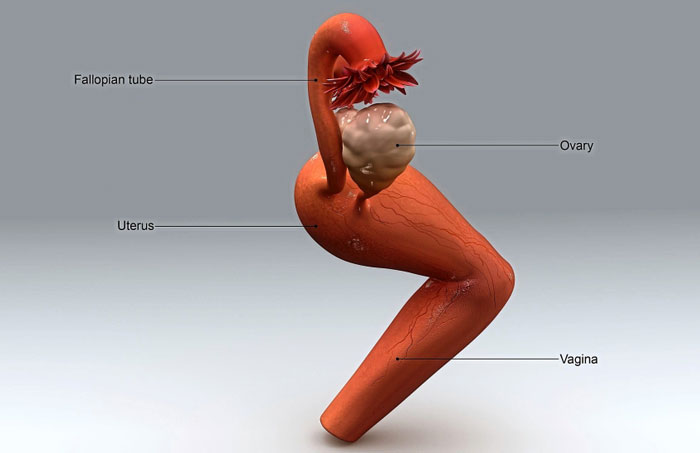Ask any obstetrician/gynaecologist about the funniest or strangest questions they’ve received about women’s health and anatomy, and you will be guaranteed that they will have at least one or two to share.
One question that might seem strange, but is actually quite a popular one, is about vaginal “rejuvenation”. In the past, it referred almost exclusively to cosmetic surgeries and treatments that changed the look and feel of the vagina.
Procedures included things such as “tightening” loose skin or changing the size of a labia, much like getting a facelift or a tummy tuck, in order to relieve signs of childbirth and ageing.
These days, vagina rejuvenation has expanded to include real medical issues related to the nether region such as these:
● Helping to reduce incontinence
● Fixing pelvic prolapse (a condition where pelvic floor muscles are weak, causing your organs to literally fall down)
● Improving vaginal pH to prevent recurring infections
● Reducing vaginal dryness and itching
● Alleviating painful intercourse
● Giving confidence to be intimate again
There are quite a number of solutions and therapies on the market for each of these conditions and more. Some are non-invasive, such as moisturisers or lubricants; there are even natural remedies like Kegel or pelvic floor exercises that are beneficial and recommended even for those who don’t have vaginal issues.
Others require professional supervision, like hormone therapy.
And there are still other vaginal “rejuvenation” methods that are considered controversial, such as plasma injections, cosmetic surgery, and even laser therapy.
With so many solutions, how do you decide which one is right for you? It starts with being informed of the pros and cons of each, and we’ll discuss some of the main types of rejuvenation methods here.
Non-invasive therapies
When it comes to vaginal lubricants or moisturisers, we are not referring to vaginal tightening creams. Such products are always marketed as a “miracle” solution to keeping your vagina looking ageless.
They contain ingredients such as manjakani extract (a traditional herb believed to tighten the vagina after childbirth), which is the gall – an abnormal growth formed in response to the presence of insect larvae, mites or fungi on plants and trees – of the Aleppo oak, known scientifically as Quercus infectoria.
Similar pill supplements are available as well. The lubricant or moisturiser we are referring to is applied to help with vaginal dryness, and you should seek a doctor’s advice and recommendation before applying anything down there.
The vagina is easily irritated by anything with harsh chemicals and when you upset the pH down there, more problems can occur, like itchiness, pain or worsening of the dryness.
Often, if you experience such uncomfortable symptoms, it is an indicator of something going on in your body. These symptoms may be caused by hormonal imbalance, dehydration, menopause-related issues, or even high blood sugar.
Seek treatment for the root cause in your internal system and the symptoms will usually go away. Speaking of creams, this option is available to you as part of hormone replacement therapy (HRT).
If the cause of vaginal atrophy symptoms is due to low oestrogen levels, then you may be prescribed HRT in three common forms: a ring (a soft and flexible band inserted into your vagina and replaced every three months), pills (administered using an applicator into your vagina) or cream (also applied into the vaginal cavity using an applicator).
The use of topical oestrogen in these ways is generally regarded as safe. As for Kegel or pelvic floor exercises, they help to reduce problems like incontinence and pelvic prolapse by strengthening the muscles in that area.
Done correctly, it can benefit the bladder, womb, bowels, and even improves orgasms! Some months of training are required to get Kegel exercises right, but once you figure out how to contract the right muscles, the results are well worth it.

Once a woman has mastered the basic Kegel exercise, she can move on to advanced versions with the aid of an exercise band or ball, as seen in this filepic.
Invasive therapies
Every woman experiences vaginal atrophy symptoms differently, and for some, treatment has to include more drastic measures. Other than cosmetic and laser surgery, there are platelet-rich plasma injections, also known as PRP or plasma injections.
This treatment involves drawing your own blood and extracting the plasma that is platelet-rich. This plasma is then injected into your vaginal tissue to activate repair and cell regeneration processes.
PRP treatments have been used in dentistry, orthopaedics, sports medicine, hair care and skin care. Most doctors will recommend surgery only as a last resort to treat vaginal laxity. There are two categories of surgeries.
The first is medically-recommended surgery for problems like pelvic prolapse and incontinence. The surgeries are uterosacral ligament suspension, sacrospinous ligament fixation or anterior vaginal repair for fixing prolapse, and sling procedure for incontinence.
The other type of surgery is cosmetic. You will rarely find any doctor who will recommend this type of surgery unless it is medically necessary, such as in situations like childbirth trauma.
Cosmetic surgery down there that’s meant to “beautify” or create a “designer vagina” brings with it too much emotional and physical trauma, which simply isn’t worth it. My best advice is to just say no, and move on.
Laser therapy
Laser therapy is considered invasive, but with the advancement of laser research and technology, it shows a fair bit of promise in treating vaginal atrophy symptoms.
The old-fashioned belief about laser therapy is that it tends to be used more for cosmetic purposes.
There are a few types of thermal laser therapies, namely radio frequency-based laser treatments, Er:YAG-based laser therapy, and the one most commonly associated with dermatology and cosmetic surgeries – fractional carbon dio-xide-based laser therapy.
The latter has long proven to be safe for tissue reconstruction on sensitive areas like the face. It is a common procedure for the removal of warts and cancerous lesions. The carbon dioxide-based laser gets absorbed by moisture in the targeted tissue, which then gets destroyed in a process known as ablation.
This kick starts a renewal process where tissues return in a tighter and more taut form. Thermal energy from carbon dioxide-based lasers is delivered in fractional form, allowing healthy tissue to surround the ablation area and support rapid epithelial repair and collagen production.
Essentially, this is how laser treatment is supposed to help reduce loose skin and give it a lift. A few studies show that laser therapy is effective and seems safe for treating vaginal atrophy symptoms, sexual function and satisfaction, and post-menopausal issues.
Fractional carbon dioxide-based laser therapy has been found to reduce the symptoms of vaginal atrophy, helping to keep the vaginal epithelium (surface cells) in a healthy, lubricated and elastic state.
Although it is rather costly, it is a relatively short and simple procedure lasting no more than 20 minutes. Only a few treatments are needed at intervals of four to six weeks and results can last for close to one year.
Apart from carbon dioxide-based lasers, Er:YAG or erbium laser therapy is another type often used for ablation. It is stronger than carbon dioxide-based lasers, emitting energy in the mid-infrared invisible light spectrum, which gives it 10 to 15 times the affinity for water absorption.
Clinical studies note that Er:YAG laser therapy may be effective for vaginal atrophy and more research is underway to determine if it is able to treat symptoms of stress urinary incontinence. So, why is laser therapy so controversial?
Unlike laser therapy to solve eyesight issues, we are still in the early stages of using lasers for vaginal treatment. There is still quite a bit we must study about the potential effects of lasers on vital organs close to the vagina, like the bladder, urethra, rectum, etc.
The other concern is that because lasers aren’t limited strictly to medical use alone, you will find such treatments in so-called medical spas where there aren’t any trained and certified medical professionals to supervise the procedures.
Thus, you don’t know if you are really getting the right treatment, and whether or not the machines are approved and certified. Laser therapy is legally permitted for the treatment of cancer, genital warts and hysterectomies, and is commonly used by leading medical institutions and professionals.
But when it come to vaginal rejuvenation, regulation authorities like the US Food and Drug Administration (FDA) are concerned about misleading marketing, particularly by pseudo-medical products and medical spas.
That’s why the US FDA has asked companies to stop marketing their laser technology as being effective for “vaginal rejuvenation”, which includes treating sexual function, atrophy and menopause symptoms.
Additionally, randomised trials and comparative studies to assess a more accurate form of dosage and number of treatments for individual patients will be need to be done.
In time, when the body of research has accumulated more long-term studies on the use of laser therapy for vaginal rejuvenation, we expect to see this become a common, safe and effective procedure.
Regardless of the type of treatment you’re considering, it’s always a good idea to get a gynaecologist’s opinion before proceeding.




